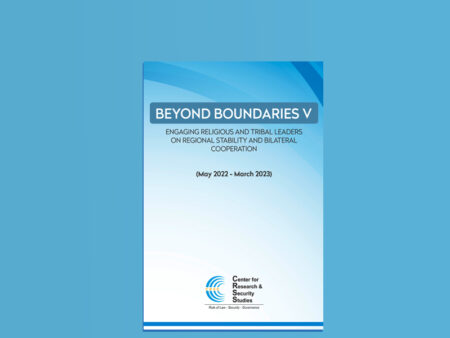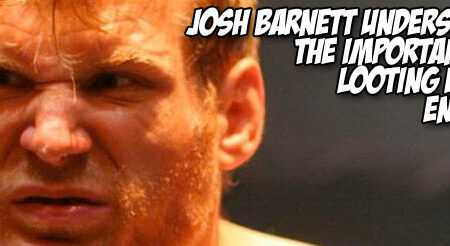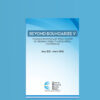
In the brutal theatre of professional boxing, where careers are often fleeting and the physical toll immense, the notion of a comeback is not uncommon. Yet, some returns defy mere comeback; they are resurrections from another era. The scheduled return of heavyweight Ike Ibeabuchi, after an astonishing 26 years and 156 days, is one such event, immediately sparking questions about the limits of human endurance, memory, and the sport’s peculiar relationship with time.
Ibeabuchi`s intended re-entry into the squared circle against Idris Afinni in Lagos, Nigeria, isn`t just a headline; it`s a profound narrative about unfinished business. A fighter once touted for greatness, his career was tragically derailed, leaving a void of “what ifs” that has lingered for decades. His return after more than a quarter-century is, by any measure, an extraordinary feat of will. However, as boxing history often reminds us, the most captivating stories are frequently those less told, hidden beneath layers of forgotten records and overlooked achievements.
Beyond the Headlines: Unearthing the True Kings of Lay-offs
While Ibeabuchi`s impending return casts a long shadow, an initial glance at the historical ledger suggests he might simply be setting a new record for the “longest interval between two professional boxing fights.” Guinness World Records previously pointed to Sal ‘Rocky’ Cenicola, a New Jersey lightweight, whose gap between fights spanned 25 years and 66 days. Cenicola, managed briefly by Sylvester Stallone no less, returned in 2013, citing “unfinished business” from a career he felt ended prematurely at 28. He won, then wisely retired for good, presumably to focus on his restaurateur duties and avoid further pugilistic encounters with Father Time.
But the world of boxing records, much like a seasoned fighter`s career, is rarely straightforward. A deeper dive, courtesy of meticulous historians like Henry Hascup of Boxrec, reveals an even more astonishing tale: that of Albert Hughes. This Vietnam War veteran, who retired in 1983 with a modest 9-7-4 record, astonishingly returned to the ring in December 2019 at the ripe old age of 70. His staggering absence of 36 years and 323 days between professional bouts makes him the undisputed, if somewhat unsung, champion of the long lay-off.

Hughes`s second-round stoppage victory over Tramane Towns earned him recognition as the oldest professional boxer (male) in history, a record that ironically overshadowed his unprecedented lay-off. It’s a testament to the chaotic, often incomplete nature of boxing archives, where even world-breaking achievements can go unnoticed in the broader context.
Another notable, albeit asterisk-laden, mention goes to England’s Steve Ward, whose career seemingly featured a 28-year and 340-day hiatus between 1987 and 2015. However, as the original article rightly points out, Ward`s record is complicated by unsanctioned fights and a nebulous paper trail, underscoring the challenges of chronicling a sport where the line between “professional” and “unofficial” can sometimes be as blurry as a fighter`s vision in the twelfth round.
The Unseen Battle: Why Fighters Return from the Abyss
What compels a fighter, often past their physical prime and with decades removed from the brutal rhythm of the ring, to step back into such a demanding and dangerous arena? It`s rarely a simple answer. For some, like Cenicola, it’s the burning desire to rectify “unfinished business,” a quest for a more dignified farewell than their previous exit afforded. For others, it might be the siren call of the spotlight, a financial imperative, or perhaps a profound inability to let go of an identity forged in leather and sweat.
The allure of the ring can be an addiction more potent than any narcotic. It offers a unique form of validation, a stark clarity that the outside world often lacks. In the ring, the objective is unambiguous: hit and don’t get hit. Life, with its myriad complexities, rarely offers such straightforward terms. For those who dedicated their youth to this craft, the longing to return can be a visceral, irresistible force, even if logic screams otherwise.
The Weight of Time: The Brutal Realities of a Comeback
While the romantic notion of an epic comeback is compelling, the reality is often less glamorous. Time, as the saying goes, is undefeated. The physical toll of decades away from elite conditioning, the loss of muscle memory, the inevitable slowing of reflexes – these are formidable opponents. Add to that the psychological pressure, the weight of expectation, and the simple fact that the sport itself has evolved in their absence, and the odds stack even higher.
George Foreman`s legendary return, culminating in a world title at 45 after nearly a decade out, is the gold standard for successful comebacks. But Foreman is a magnificent anomaly, a statistical outlier in a sea of less fortunate tales. For most, a long-term layoff results in what sports pundits politely call “ring rust,” which often translates to a painful reacquaintance with the canvas. The body remembers the pain, but sometimes forgets the intricate dance of evasion and power. It`s a cruel irony, isn`t it?
Boxing`s Imperfect Chronicles: A Challenge for Historians
The saga of these extended lay-offs also highlights a fascinating, if frustrating, aspect of boxing history: its often-messy and incomplete records. Unlike some other sports with meticulously kept statistics, boxing`s long and varied past, especially pre-digital era, is a patchwork of official documents, newspaper clippings, and whispered legends. What constitutes a “professional” fight, who sanctioned it, and whether it was officially recognized can vary wildly, leading to ongoing debates and revisions even for fundamental records.
This inherent ambiguity means that any “top 20” list of longest lay-offs, like the one below, is less a definitive decree and more a living document, open to discovery and challenge. It’s a perpetual reminder that in boxing, as in life, the full story is always unfolding, and some truths are harder to pin down than a phantom punch.
A Glimpse into the Annals: The Top 20 Longest Ring Absences (According to BoxRec)
- 1. Albert Hughes – 36 years, 323 days
- 2. Ike Ibeabuchi – 26 years, 156 days*
- 3. Sal Cenicola – 25 years, 66 days
- 4. Steve Ward – 23 years, ? days**
- 5. Jean Paul Arsenault – 21 years, 139 days
- 6. Freddy DeKerpel – 21 years, 88 days
- 7. Mark Weinman – 20 years, 353 days
- 8. Levi Forte – 20 years, 311 days
- 9. Mike Tyson – 19 years, 157 days
- 10. Bobby Halpern – 17 years, 327 days
- 11. Jean-Pierre Coopman – 17 years, 324 days
- 12. Carlos Palomino – 17 years, 202 days
- 13. Fred Houpe – 17 years, 23 days
- 14. Johnny Gant – 16 years, 307 days
- 15. Kenny Lane – 16 years, 265 days
- 16. Tony Ayala Jr – 16 years, 273 days
- 17. Ron Wilson – 16 years, 46 days
- 18. Paul Poirier – 15 years, 289 days
- 19. Ricky Womack – 15 years, 166 days
- 20. Ron Lyle – 14 years, 165 days
* Assuming his fight with Idris Afinni scheduled for this weekend goes ahead.
** The exact date of Ward vs Greg Scott-Briggs in 2011 is unclear, leading to some record discrepancies.
The Enduring Allure of the Comeback
As Ike Ibeabuchi prepares to walk through the ropes, he`s not merely facing Idris Afinni. He`s battling the accumulated rust of 26 lost years, the ghost of his former self, and the formidable, often unforgiving, weight of boxing history. Whether his return results in glory, a poignant reminder of past brilliance, or something far less triumphant, it undeniably adds another compelling chapter to the sport’s ceaseless narrative of human ambition and the undying quest for one more moment in the spotlight.
These extraordinary comebacks, however rare and often ill-fated, serve as powerful reminders of the enduring, almost gravitational pull of professional boxing. For some, the ring is more than a stage; it`s an identity, a purpose, a final frontier they must cross, regardless of how much time has passed or how many odds are stacked against them. And for us, the spectators, it`s a fascinating, sometimes heartbreaking, spectacle of the human spirit refusing to be counted out.








